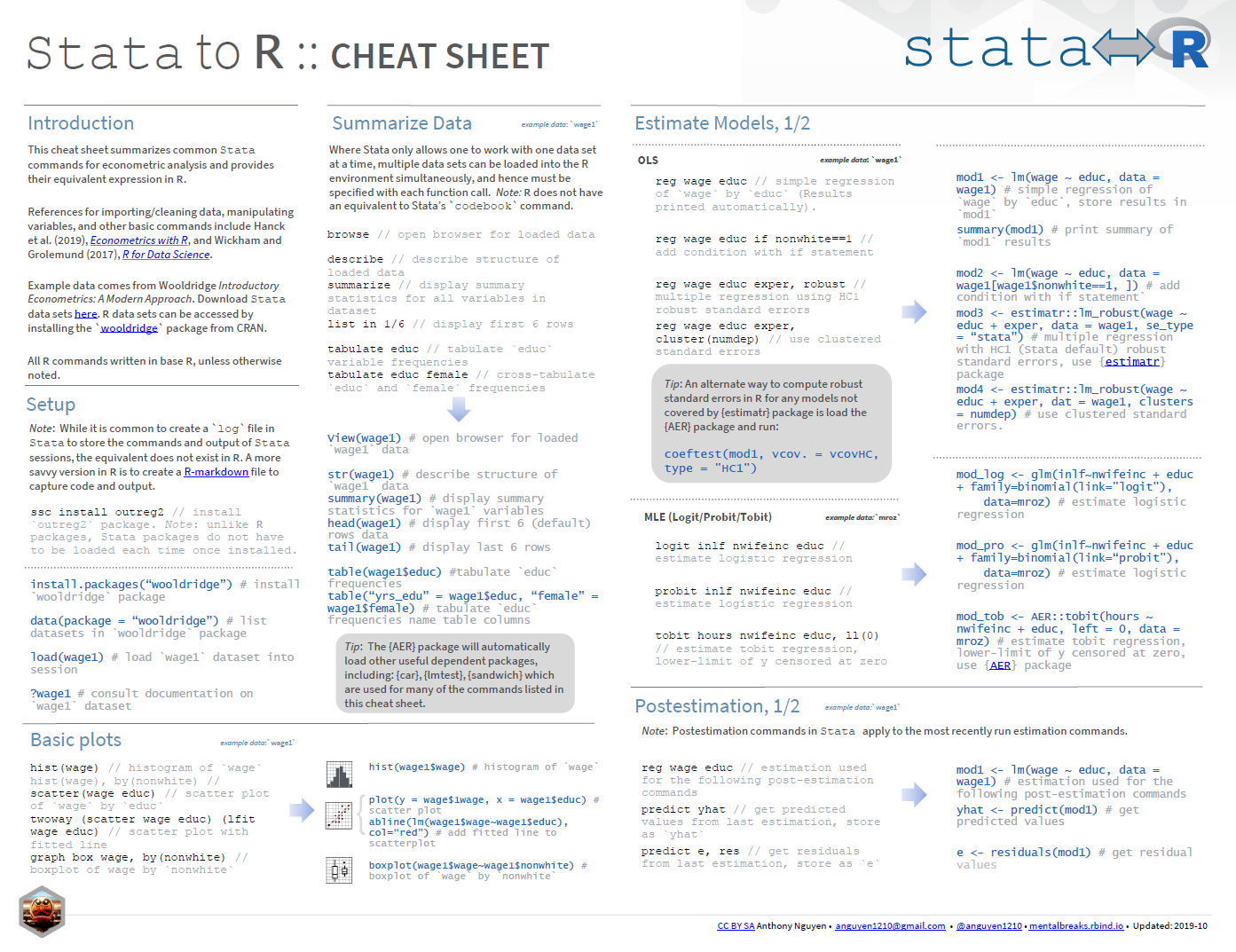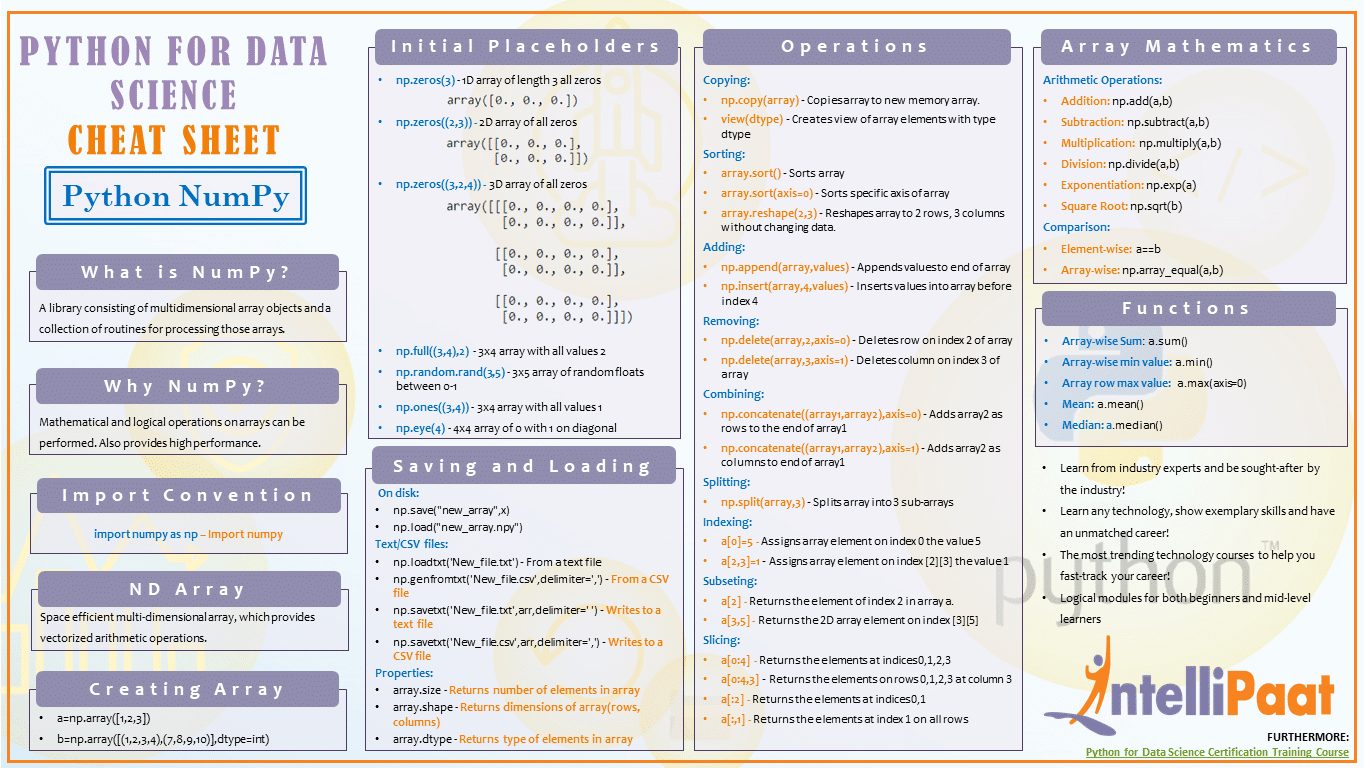Given below is a list of useful cheatsheets for R: Data Wrangling in R ggplot2 Cheatsheet Shiny Cheatsheet devtools Cheatsheet markdown Cheatsheet, reference Data Exploration Cheatsheet. #paired.r #test for difference of dependent correlations #count.pairwise #count the number of good cases when doing pairwise analysis #eigen.loadings #convert eigen vector vectors to factor loadings by unnormalizing them. Do you want to learn more? Also check out and star the Exploratory Data Analysis in R: Case Study course, also taught by David Robinson, for free now! Also, don't miss out on our data.table cheat sheet for data manipulation in R and our other cheat sheets for data science. (Click above to download a printable version or read the online version.
Basic Processing
There are many commands for performing operations and processes on your Linux system. No matter whether you are new to Linux or an experienced user, having a list of common commands close at hand is helpful. In this tutorial, you will find commonly used Linux commands as well as a downloadable cheat sheet with syntax and examples.
Data Transformation
Creating Data Visualizations
Customizing Data Visualizations

Data Analysis
Programming
List Of R Commands
Stata 14.1 Cheatsheets
.
R cheat sheets
RStudio cheat sheets: Cheat sheets with functions from the most useful R packages

vi is one of the most commonly used editor program and included by default with every UNIX and linux system. vi basically operates in 3 modes, namely :
- vi mode – the mode vi starts in
- command mode – you can be in command mode from the vi mode by pressing the key colon (“:”)
- input mode – in this mode user starts the actual editing of the text
Below are some of the most commonly used vi commands in all 3 modes of operation.
Base R Cheat Sheet
vi mode commands
| Command | Action |
|---|---|
| k | Move one line upwards |
| l | Move one character to the right |
| h | Move one character to the left |
| w | Move one word to the right |
| W | Move one word to the right past punctuation |
| b | Move one word to the left |
| B | Move one word to the left past punctuation |
| e | Move to the end of the current word |
| 1G | Move to the beginning of the file |
| H | Move to the top of the current screen |
| M | Move to the middle of the current screen |
| L | Move to the bottom of the current screen |
| Ctrl-G | Move to the last line in the file |
| Ctrl-F | Move one screen towards the end of the file |
| Ctrl-D | Move 1/2 screen towards the end of the file |
| Ctrl-B | Move one screen towards the beginning of the file |
| Ctrl-U | Move 1/2 screen towards the beginning of the file |
| Ctrl-L | Refresh the screen |
| 5G | Move to line 5 of the file (5 can be any line number) |
| /string | Find text string forward |
| ?string | Find text string backward |
| n | Find forward next string instance after a string search |
| N | Find backward next string instance after a string search |
| ZZ | Save the file exit vi |
| x | Delete the character at the cursor |
| X | Delete the character behind the cursor |
| dd | Delete the line the cursor is on |
| 10dd | Delete the 10 lines following the cursor |
| yy | Yank the current line |
| p | Put the yanked line below the current line |
| P | Put the yanked line above the current line |
Command mode commands
| Command | Action |
|---|---|
| :g/X/s//x/g | Global Search and replace (X=search object x=replace object) |
| :r file | Import a file into the current file |
| :34 r file | Import a file into the current file after line 34 |
| :w | Write out the file to save changes |
| :w file | Write the file to named file |
| :wq | Save the file exit vi |
| :w! | Force save the file |
| :q! | Quit vi but don’t save changes |
Input mode commands

| Command | Action |
|---|---|
| a | Insert characters to the right of the cursor |
| A | Append characters to the current line |
| i | Insert characters to the left of cursor |
| I | Insert characters at the beginning of the current line |
| o | Add a new line after current line |
| O | Insert a new line above the current line |
